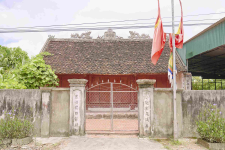
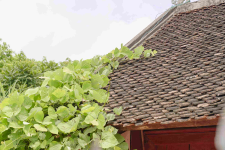
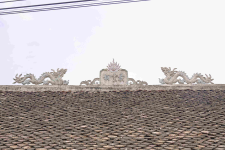
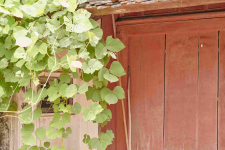
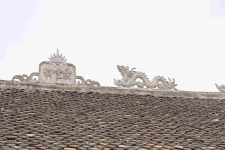
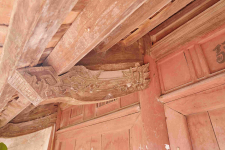
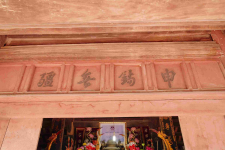
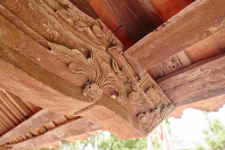
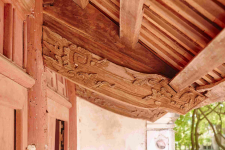
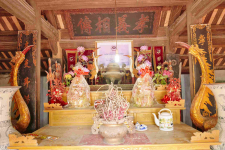
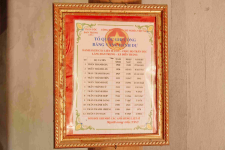
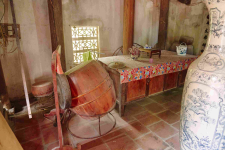
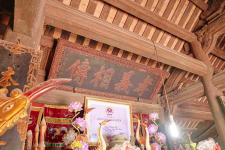
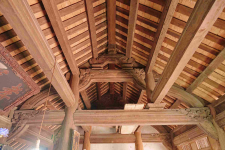
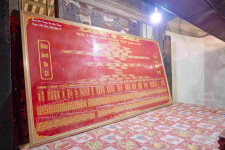
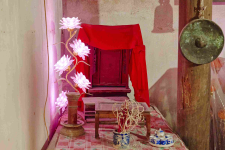
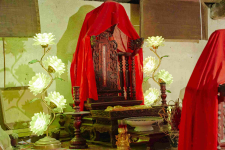
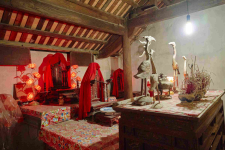
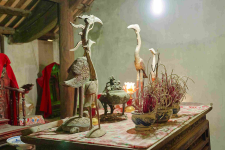
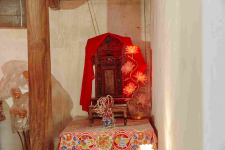
Camera tour
Price: Free
Time to visit a place: 120 phút
Open Time: 7:00 AM - Close Time: 6:00 PM
Address: Dien Thang Village, Dien Chau District, Nghe An Province
PHAP DO TEMPLE - DIEN CHAU DISTRICT
Phap Do Temple is located in the center of Dan Trung village, Minh Chau commune, Dien Chau district, it is the place to worship Great Mandarin Tran Phap Do.
Tran Phap Do worked as a mandarin under the Le dynasty, used to hold the position of "Thiết chế lễ tướng công" (major mandarin managing the organizational system of the apparatus that set forth the provisions of the Constitution and laws in the feudal dynasties). He was also a man who had merits in recruiting people, establishing hamlets, exploring many desolate areas into green fields, expanding careers, and building villages such as: Phu Huu, Tuong Lai, Thanh Xa, Noi Dong, Noi Hap. … After his death, he was buried in Tuong Lai, Hao Kiet (now known as Nhan Thanh commune, Yen Thanh district, Nghe An province). Tran Phap Do was not only the ancestor of water management of the Tran family-lan in the Nghe Tinh region, but also the "the guardian deity of the region" for the people in Thai Xa, who was founded by the People to worship. Through the feudal dynasties, the guardian deity was ordained the title of "Hách trạc tướng công hộ quốc tỷ dân, dực bảo trung hưng, Trung đẳng thần” by the king.
Phap Do Temple was built in the late 16th century in Phu Huu village, it was moved to Dan Trung village in 1679 as it is today. During the Can Vuong movement against the French at the end of the 19th century, Phap Do temple was a gathering place for insurgents to organize meetings, exchanges and communication between leaders in the insurgent army. During the Nghe Tinh Soviet movement in 1930-1931, the temple was chosen as the venue for many important meetings in the capital city level, Dien Chau district. From 1932 to 1935, the temple continued to be selected as the basis for organizing meetings, printing leaflets, books, newspapers and documents of the Party, the workplace of the Executive Committee of the Party Committee of the Central Region, which was in charge of Comrade Vo Nguyen Hien
After the success of the August Revolution, Phap Do temple continued to be requisitioned to serve the resistance war against the US to save the country. For those contributions, the temple was awarded the first-class resistance medal on December 19, 1986.
Not only carrying many historical values, Phap Do Temple is also an architectural work of artistic value. The temple has an overall structure in the style of the word "Three", including 3 halls: Upper hall, Middle hall and Lower hall with elegant, gentle and delicate carvings of ancient architecture. The temple also keeps many ancient sacrifices of high artistic value. In addition, the old writings left behind such as: horizontal calligraphy boards, horizontal lacquered boards, couplets, sacrificial writings in kanji… were all imbued with profound humanistic thought and philosophy. Typically, the great letter in the main hall has 4 words: "traditional filial piety handed down". On the top of the temple roof, there is a picture of two dragons adoring the moon, under the moon are 3 words: "Tối Linh Từ", meaning the temple was very sacred. In 1997, the temple was recognized as a "historical and cultural relic" at the national level.
According to the old custom, every year on the 15th day of the 7th lunar month, people around the region hold a festival to remember and pay tribute to their "protector" deity. This is a typical festival of agricultural residents who grow wet rice in Nghe county. From 1945 until now, the annual festival at Phap Do temple has been held on the day of Independence of the nation, which is on September 2nd of the solar calendar, creating a lively festival atmosphere attracting a large number of people and tourists to attend.
Distance: 5.22 km
Distance: 7.72 km
Distance: 8.68 km
Distance: 9.22 km
Distance: 9.39 km
Distance: 9.42 km
Distance: 9.43 km
Distance: 9.52 km
Distance: 9.52 km
Distance: 9.73 km
Distance: 9.83 km
Distance: 9.85 km
Distance: 10.44 km
Distance: 10.49 km
Distance: 10.60 km
Distance: 9.08 km
Distance: 9.25 km
Distance: 9.34 km
Distance: 9.36 km
Distance: 9.50 km
Distance: 9.51 km
Distance: 11.25 km
Distance: 11.28 km
Distance: 11.43 km
Distance: 15.27 km
Distance: 16.40 km
Distance: 0 m
Distance: 2.11 km
Distance: 2.69 km
Distance: 3.93 km
Distance: 4.18 km
Distance: 4.87 km
Distance: 4.99 km
Distance: 6.27 km
Distance: 8.06 km
Distance: 8.20 km
Distance: 8.21 km
Distance: 8.56 km
Distance: 9.03 km
Distance: 9.03 km
Distance: 9.10 km
Distance: 9.74 km
Distance: 10.15 km
Distance: 10.17 km
Distance: 8.35 km
Distance: 8.72 km
Distance: 9.16 km
Distance: 9.35 km
Distance: 10 km
Distance: 15.28 km
Distance: 17.54 km


